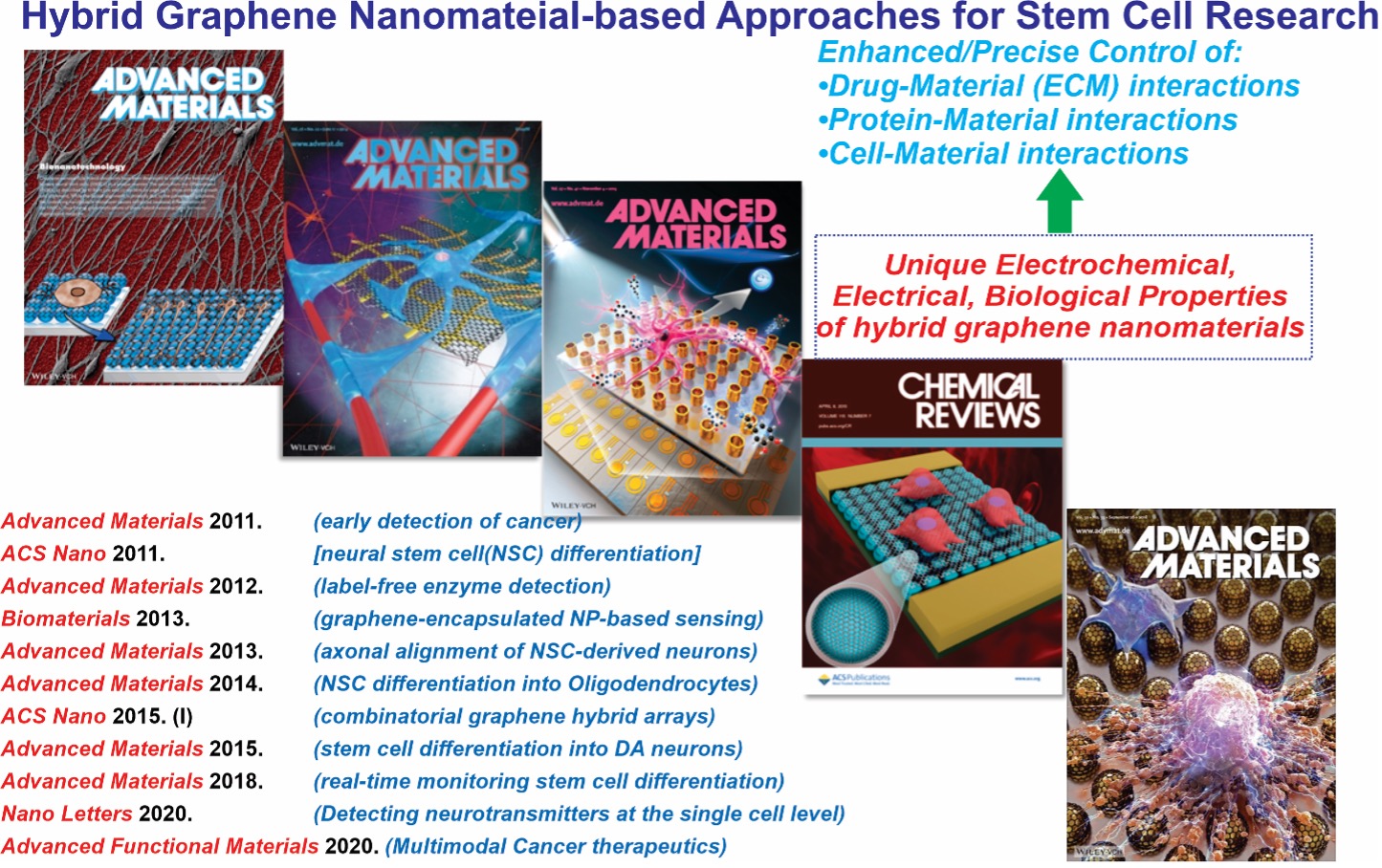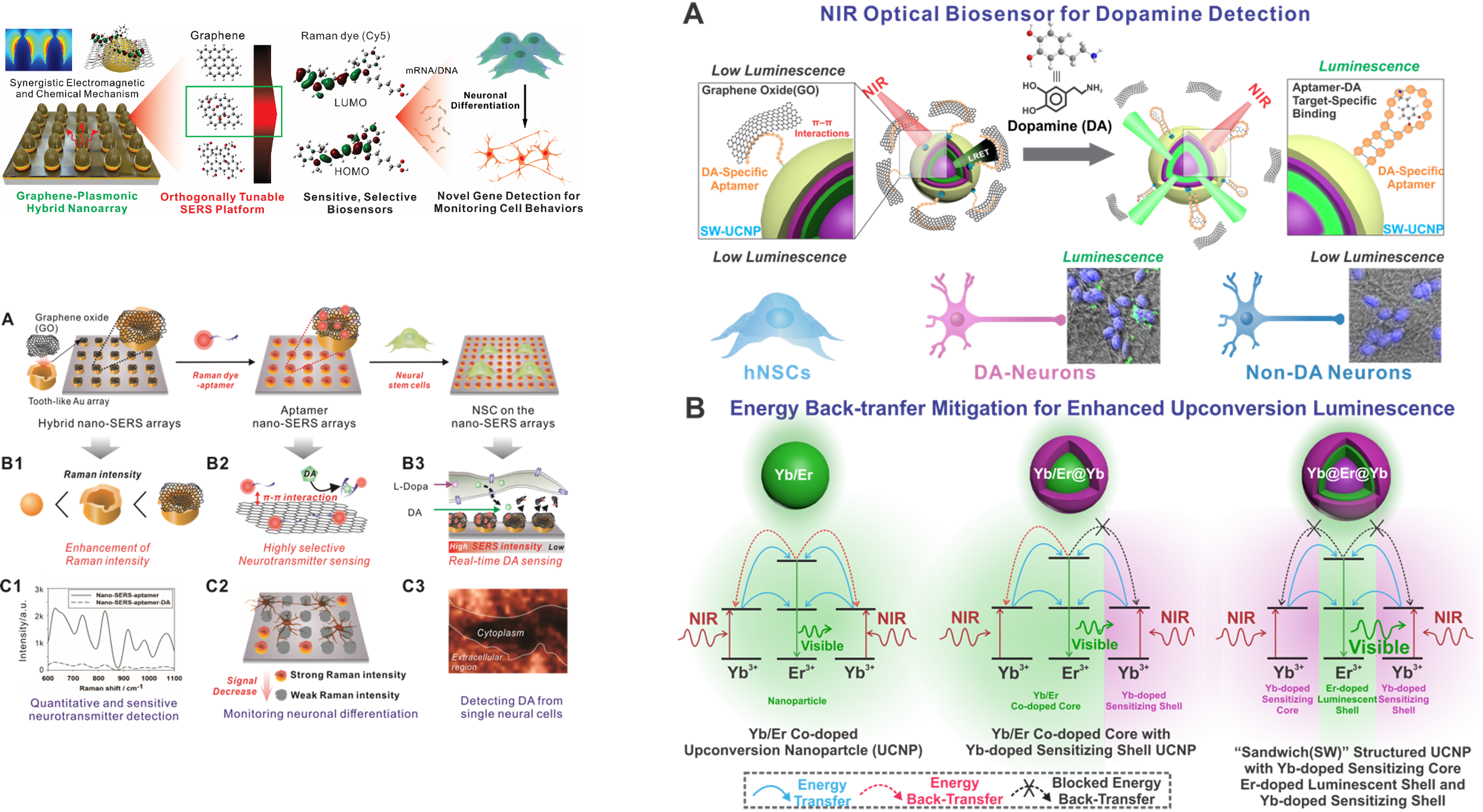Combinatorial Nanomaterial-Based Approaches to generate Stem Cell-based Neural Networks and Detect Neurotransmitters in Stem Cell-derived Neural Interface
The search for novel ways to explore and better understand the functions of insoluble/physical cues on the behaviors of stem cells is vital in the areas of regenerative medicine, as the insoluble/physical microenvironmental signals significantly affect the behaviors of cells, including stem cell adhesion, growth, migration, and differentiation. In this context, stem cells can sense and consequently respond to the physical microenvironment in which they reside. For instance, changes in cell shape and alignment are vital cellular responses to surface properties of the underlying substrate. Several approaches based on surface chemistry and nano/microfabrication have been examined over the last decade to comprehend these phenomena. However, establishing controlled and reliable methodologies to guide stem cell differentiation into specialized cell lineages via modulating insoluble/physical cues remains to be achieved. To address the aforementioned challenges, we have focused on two overarching strategies to control this process selectively. In our first approach, we modulated the surface chemistry of 2D substrates to control neural stem cell morphology and the resulting differentiation process. Patterned surfaces, consisting of immobilized extracellular matrix proteins and/or nanomaterials, were generated and observed to guide neuronal differentiation and polarization. Building on the abovementioned approaches, we further tuned the cell-substrate interactions in a third approach by introducing nanotopographical features in the form of nanoparticle films and nanofibers. Besides providing a 3D surface topography, our unique nano-scaffolds were observed to enhance gene delivery, facilitate axonal alignment, selectively control differentiation into neural cell lines of interest, and generate stem cell-based neural interfaces.
Key Reference Papers from KBLEE group:
1. Lee, J.-H.; Choi, H. K.; Yang, L.; Chueng, S.-T. D.; Choi, J.-W.; Lee, K.-B.†, Nondestructive Real-Time Monitoring of Enhanced Stem Cell Differentiation Using a Graphene-Au Hybrid Nanoelectrode Array. Advanced Materials 2018, 30 (39), 1802762.
2. Kim, T.-H.; Yea, C.-H.; Chueng, S.-T. D.; Yin, P. T.-T.; Conley, B.; Dardir, K.; Pak, Y.; Jung, G. Y.; Choi, J.-W.; Lee, K.-B.†, Large-Scale Nanoelectrode Arrays to Monitor the Dopaminergic Differentiation of Human Neural Stem Cells. Advanced Materials 2015, 27 (41), 6356-6362.
3. Rabie, H.; Zhang, Y.; Pasquale, N.; Lagos, M. J.; Batson, P. E.; Lee, K.-B.†, NIR Biosensing of Neurotransmitters in Stem Cell-Derived Neural Interface Using Advanced Core–Shell Upconversion Nanoparticles. Advanced Materials 2019, 31 (14), 1806991.


